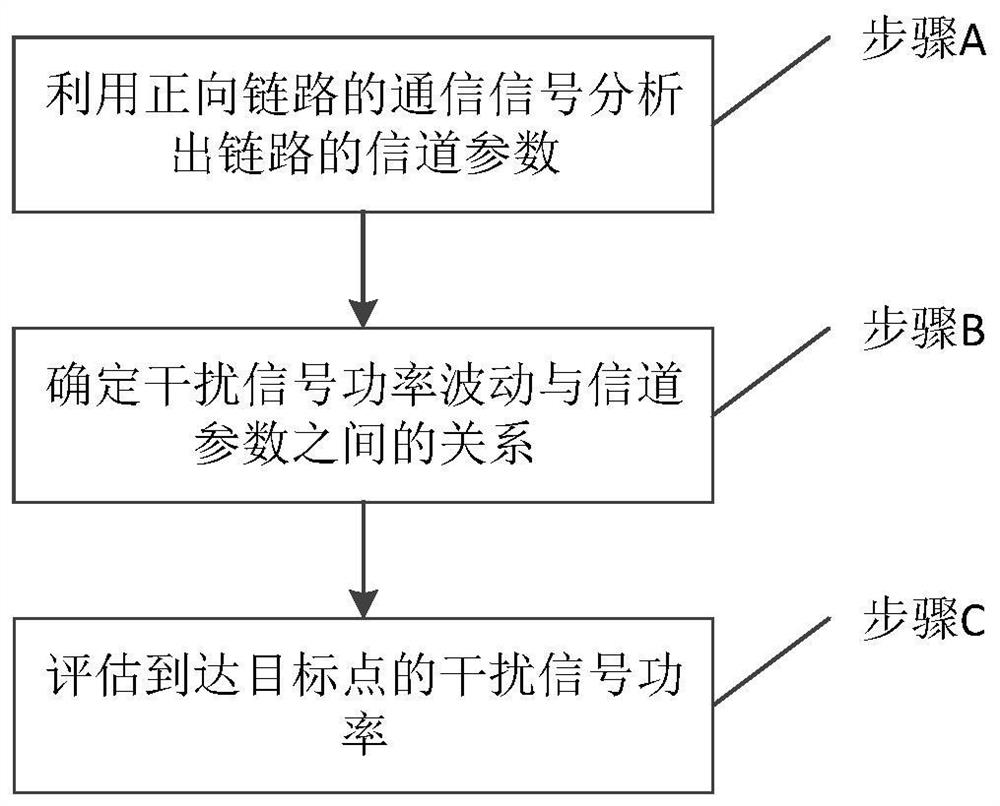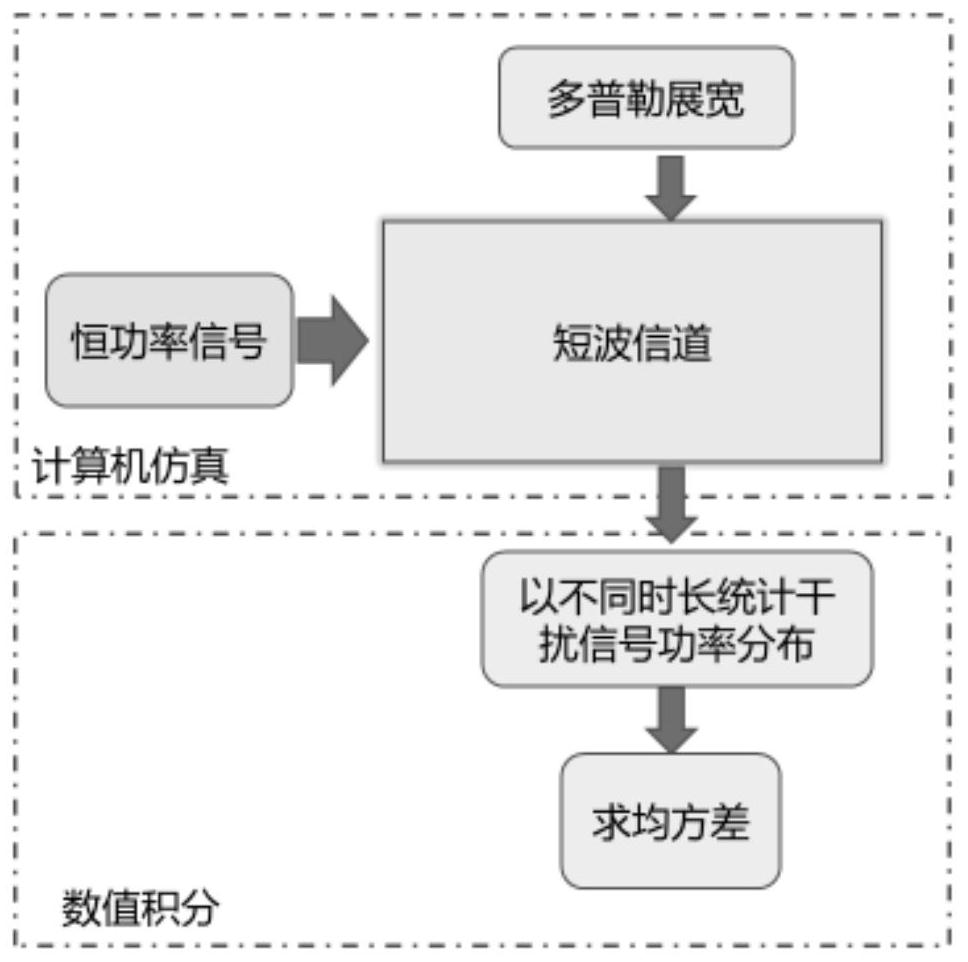Short-wave interference signal arrival power evaluation method based on forward communication data
A technology for interference signals and communication signals, applied in channel estimation, baseband system components, transmission monitoring, etc., can solve problems such as poor interference concealment, interference signal power fading, and inability to evaluate interference signal power fluctuation characteristics to overcome complexity The effect of high, high estimation accuracy
- Summary
- Abstract
- Description
- Claims
- Application Information
AI Technical Summary
Problems solved by technology
Method used
Image
Examples
Embodiment 1
[0026] Embodiment 1. This embodiment discloses a method for evaluating the arrival power of shortwave interference signals based on forward communication data. First, the communication signal of the forward link is used to analyze the channel parameters of the link, and then according to the power fluctuation of the shortwave interference signal and the The relationship between the channel parameters is given to estimate the arrival power of the interference signal of this link in order to obtain the power distribution of the interference signal arriving at the interference point.
[0027] Taking a communication station and an interference station at a distance of 1000 kilometers as an example, the transmission power of the communication station is 125W, and the transmission power of the interference station is 1000W. The signal transmitted by the communication station is a 3GALE signal, the path loss is 110dB, and the Doppler broadening is 0.1Hz, such as figure 1 As shown, it...
PUM
 Login to View More
Login to View More Abstract
Description
Claims
Application Information
 Login to View More
Login to View More - R&D
- Intellectual Property
- Life Sciences
- Materials
- Tech Scout
- Unparalleled Data Quality
- Higher Quality Content
- 60% Fewer Hallucinations
Browse by: Latest US Patents, China's latest patents, Technical Efficacy Thesaurus, Application Domain, Technology Topic, Popular Technical Reports.
© 2025 PatSnap. All rights reserved.Legal|Privacy policy|Modern Slavery Act Transparency Statement|Sitemap|About US| Contact US: help@patsnap.com



